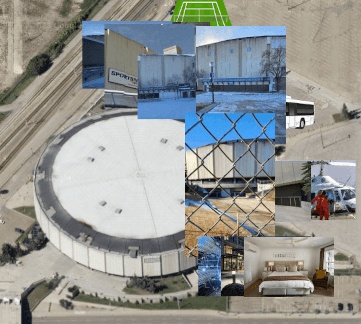The Benefits Of A Community Hospital
In addition to providing services in case of emergency, community hospitals provide vital services for those living with long-term illnesses, such as diabetes or cancer. They’ll also provide routine but essential processes for patients, like screenings and dialysis.
Seeing that the UCP decided to do a massive shake up in the delivery of healthcare in our province and fire those on the board of the AHS, it would be wise to see if they would be interested in the running of Our Community Medical Care Center, especially if it means better delivery of publicly funded healthcare. There of course will be multiple revenue streams to support it and these officials may have incite on how to raise more funding in addition to our current fund raising model for the Coliseum and communities we wish to support.
Thanksgiving is right around the corner. During this time, we want to express our gratitude and shine the spotlight on the community hospital. Here are a few reasons to be thankful for these dedicated providers.
From the outside looking in, a community hospital may seem small compared to massive academic or research-based facilities. However, according to NRHA President Tim Putnam, when it comes to healthcare, bigger hospitals do not always equate to better care.
The value offered by community hospitals has great depth in the national healthcare picture. In addition to providing a launching pad for improved patient-centered care, community hospitals act as vital economic lifelines, lay the groundwork for innovation, and fill gaps in an industry-wide journey toward improved population health management.
Reasons to Thank Your Community Hospital
1. More Opportunities for Improved Community Health
Community hospitals often deal with close knit groups, giving them an advantage when it comes to providing enhanced patient-centered care through better engagement.
Community providers see their patients more often in everyday settings like at the grocery store or a little league game, says NRHA CEO Alan Morgan. He adds that this “improved community knowledge lends itself to a better understanding, and in many cases, a better healthcare partnership between provider and the patient.”
Strong relationships between smaller hospitals and their communities can make it easier to adopt “specialized population health programs that create positive health outcomes,” according to a study from Hospitals in Pursuit of Excellence(HPOE). The adoption of specialized community programs is just one feature of a movement that seeks to treat patients as people rather than numbers on a screen.
By providing examples of how community engagement works on a smaller scale, larger hospital systems may become more capable of creating similar models. The healthcare industry can learn from the examples set in the community healthcare experience.
2. A Spark for Healthcare Industry Innovation
Many substantial healthcare delivery innovations over the past two decades have their foundations in the rural experience. Specifically, he mentions technologies that arose out of a need to address healthcare workforce shortages in rural America.
It is our plan here in The City Of Edmonton to perfect the delivery of a community public healthcare model and then expand into communities in and around Edmonton, Alberta, Canada. Many of the innovations here in Alberta come out of our local hospitals, technical and university institutions. There continues to be more and more advancements made, right here in Edmonton, something we all can celebrate.
An article in the Journal of the Catholic Health Association of the United States states that “the future of research lies squarely in the domain of community hospital systems.” They cite advantages like deep community roots as well as patient population diversity and agility.
3. Superior Vital Outpatient Services
Community hospitals can afford to direct more resources at perfecting service lines that best meet their population’s immediate needs because they’re closer to their patients and have more agility.
“Rural and community hospitals excel in the high-volume areas of population health,” Putnam says. Community hospitals often perform well in outpatient care because instead of adding complexity, they prioritize high-value programs already factored into their operational costs. But when patients need to transition to a setting that can offer advanced services, partnerships between community and large medical centers become vital. These partnerships allow different sized providers to spend more time focusing on the things they do best for the betterment of the entire patient population.
4. A Resource for Improving the Healthcare Workforce
Healthcare workforce shortage pains are felt across the country, but most notably in rural areas. However, those who do pick the community hospital path may find it is a smart investment in their career and professional development.
There are several ways community hospitals can help improve the healthcare workforce, according to Elite Healthcare. Most notably, working in a local community and rural setting naturally creates more learning opportunities for qualified medical professionals and physicians. Physicians often see a wide range of cases at the community level which means they may be able to quickly expand their skill set into other areas.
5. Community Hospitals are Pillars of Economy
The community hospital serves dual purposes in many rural and urban settings as a center for both care and economic stability.
Alberta Health Services (AHS) is Canada’s largest health care delivery organization and Alberta’s largest employer with 102,000 employees. 90% are unionized staff from 5 different unions. More than 8,600 physicians across a range of specialties work in AHS facilities. For companies or industries looking to plant roots in communities like Parkdale & Chromdale, The City Of Edmonton in itself, easy access to healthcare is critical. When a hospital is present, a community is more likely to thrive economically.
Credit to content, obtained from MEDHOST And AHS, savetheedmontoncoliseum.ca


